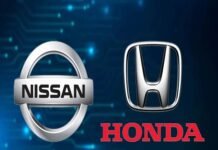Intro:
Nissan and Honda have announced plans to merge by 2026, causing a major change in the Japanese auto sector. The collaboration promises to reshape the global car market, blending two iconic automakers into a powerful force. Here’s everything you need to know about the merger, its implications, and the challenges ahead.
A Vision for the Future: The Merger Announcement
In a joint statement, Nissan and Honda agreed to merge operations under a joint holding company. While the agreement is still in its early stages, the companies signed a memorandum of understanding to formalize ongoing discussions. If the merger materializes, it would position Nissan and Honda as the third-largest automotive group globally.
Key Highlights:
- Projected Completion Date: 2026
- Combined Sales Target: $191 billion annually (as per Reuters)
- Potential Expansion: Mitsubishi Motors, partly owned by Nissan, may decide by January whether to join the merger.
At a press conference, Honda CEO Toshihiro Mibe emphasized the urgency of adapting to industry disruptions. “The rise of Chinese automakers and advancements in electrification and autonomous driving demand that we reinforce our capabilities by 2030 to stay competitive,” Mibe said. Why a Merger Now?
Jessica Caldwell, head of insights at Edmunds, explains that the move isn’t about addressing immediate issues but preparing for long-term success.
“A merger would be a strategic decision to share the significant costs of electrification and autonomous vehicle development,” Caldwell said. “In an era where EVs and self-driving technology are transforming the industry, smaller automakers need alliances to compete with dominant global players and avoid aggressive competition from Chinese manufacturers.”
Challenges on the Road Ahead
While the merger presents exciting possibilities, significant hurdles remain.
1. Political Scrutiny
The incoming U.S. administration under President-elect Donald Trump could complicate matters. Trump has previously proposed tariffs of up to 25% on imported vehicles and threatened restrictions on Japanese automakers. Both Nissan and Honda have manufacturing plants in Mexico and Canada, potentially making them targets for tough negotiations.
2. Policy Uncertainty
Trump’s stance on EV-friendly policies might disrupt the companies’ electrification strategies. Industry experts warn that Honda and Nissan may face pressure to make concessions to secure approval for the deal.
3. Workforce Realignments
recently announced global layoffs and production cuts, adding another layer of complexity to the merger process. Meanwhile, Honda operates 12 manufacturing plants in the U.S., where it produces a diverse range of products, from automobiles to aircraft engines.
Conclusion: A Long-Term Play for Survival
The proposed merger between Nissan and Honda marks a bold step toward shaping the future of mobility. By pooling resources, the companies aim to lead in electrification, autonomous driving, and global market competitiveness.
However, there are plenty of hurdles in the way, including political resistance, policy shifts, and operational adjustments. As both companies navigate these obstacles, one thing remains clear: the merger represents a visionary strategy, not just for survival but for thriving in a rapidly evolving industry.










































